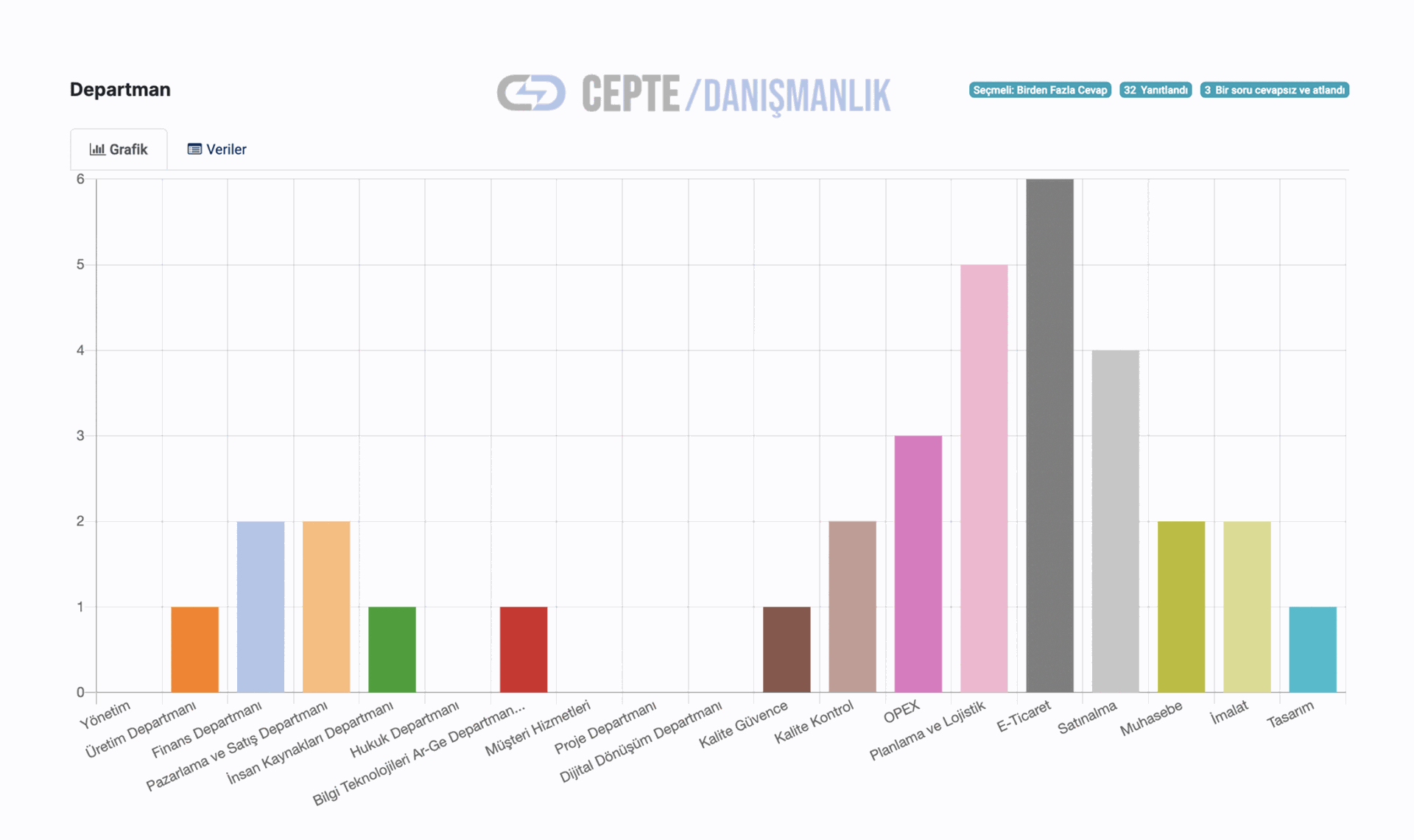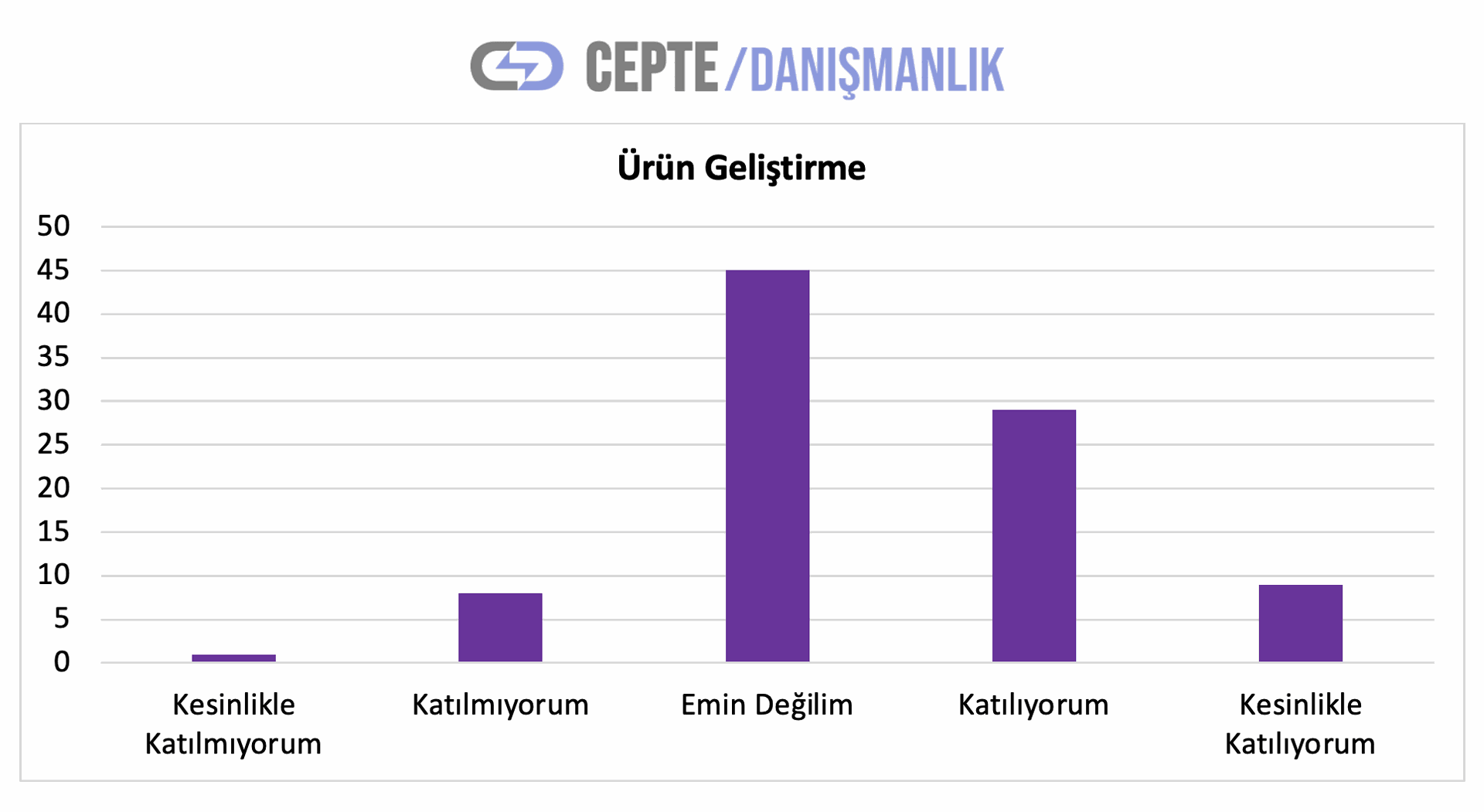What is a Digital Transformation Maturity Analysis? How to do it?
The level of having, benefiting from, and gaining strategic advantage from digital transformation technologies is determined by analysing the digital transformation maturity of enterprises' organisational structures and production processes, customer relations, R&D and P&D management, quality management, warehouse management, maintenance management, and other processes within the framework of enterprise-specific criteria.
Maturity models are a common tool for helping organisations understand their current level of competence in a specific functional, strategic, or organisational area. They are frequently used for self-assessment. Furthermore, using, evaluating, and discussing various maturity analyses can help an organisation gain a common understanding, allowing it to progress to a higher level of maturity over time.
Maturity models are frequently descriptive in nature, focusing on processes and their overall outcomes rather than heavily relying on metrics. By their very nature, maturity models are not prescriptive about the details of processes or how broad outcomes should be achieved. There is no one-size-fits-all or detailed method that should be followed.
The maturity model, on the other hand, will assist a manager in determining where they see themselves in terms of their current level of maturity, as well as the types of processes and broad outcomes they may want to consider during this process.
However, the maturity model will assist in assessing a business's current state (in process, organisation, and technology components), where they see themselves, and their level of digital transformation culture and leadership.
What is Digital Transformation?
Digital transformation is a cultural, organisational, and operational shift in an organisation, industry, or ecosystem that involves the gradual and intelligent integration of digital technologies (all types of software and hardware), processes, and competencies at all levels and functions.
Digital transformation employs technologies to generate value and new services for various stakeholders (customers in the broadest sense), to innovate, and to improve the ability to adapt quickly to changing conditions.
Digital transformation does not imply the Transformation of technological infrastructure.
Digital transformation is the shift to a new business and lifestyle culture!
To achieve business results, an organisation must consider digital transformation holistically, taking into account people, culture, and processes, rather than just digital technology.

What is Digital Maturity?
Digital maturity refers to an organization's ability to respond quickly to technological advances and changing trends. The goal is to quickly create value from these new capabilities and consumer interests in order to gain a competitive advantage over competitors. Digital maturity necessitates the investment in tools and human resources capable of utilising new technology.
The Importance of Digital Maturity for Companies
The COVID-19 pandemic has prompted business leaders to embrace digital transformation earlier than expected, resulting in digital technology implementation at a never-before-seen scale. Statistics back this up as well. For example, according to Deloitte's global survey, 97% of IT executives said their companies had undergone digital transformation as a result of COVID, and 60% said "COVID has caused a large amount of change."
We see that companies with a high level of "digital transformation maturity" gain a competitive advantage by responding much faster to this digital transformation mandate.
Furthermore, Deloitte found that 43% of companies with digital maturity generated significantly higher net profits than industry averages.
What is the purpose of the digital transformation maturity analysis?
The digital maturity model evaluates your company's current performance and provides a road map for your future digital transformation. The further you progress in this framework, the more efficient and effective your company's digitalization efforts will be.
How to determine the Digital Transformation Maturity Level?
Successful digital transformation processes are built on a strong digital maturity capability. Digital Transformation Maturity Analysis Models differ for small, medium, and large-scale businesses, as well as those that sell products and services. As a result, there are numerous digital transformation maturity analysis models, and no single standard. Examples of maturity analysis models include:
Google Digital Maturity Analysis Model
S.I.R.I (Smart Industry Readiness Index)
D3A Digital Maturity Analysis
McKinsey Digital Transformation Maturity Analysis
There are many digital transformation maturity analysis methods applied by organisations such as Deloitte.
Although the fundamental evaluation areas of all of them are the same, they differ in details.
An Overview of Maturity Analysis Parameters
In-house strategy
Leadership
Products or services
Operations
Horizontal and verical integration
Culture
Human Resources and competences
Management and governance
Technology
Improvement and targets
Successful digital transformation examples
However, there are some key areas that need to be considered for firms of all sizes or sectors. These are key areas for assessing and improving the digital maturity of firms. I would like to share them with you here to provide a useful framework.

Steps of Digital Transformation Maturity Analysis Study
Define the scope of the analysis: This entails determining which aspects of the organisation will be covered by the analysis, such as processes, systems, or technologies.
Identify key stakeholders: These are the people or groups who will be involved in the analysis and, ultimately, impacted by the outcomes.
Create a set of evaluation criteria: By defining specific areas or dimensions to be assessed, such as the organization's use of digital technologies, data collection and analysis capabilities, and level of customer engagement.
Collect and analyse data: This entails gathering information from a variety of sources, such as surveys, interviews, and existing data sources, and using it to assess the organization's current level of digital maturity.
Identify areas for improvement: Based on the analysis results, the organisation can determine where it needs to improve in order to become more digitally mature.
Create an action plan, which outlines specific goals and objectives as well as the steps needed to achieve them.
It is important to note that digital transformation maturity analysis is a continuous process because the organization's digital needs and capabilities will change over time. To ensure that the organization's digital maturity keeps up with changing market conditions and customer expectations, it is critical to review and update it on a regular basis.
Methods for Assessing the Maturity of Digital Transformation
Dijital dönüşüm, verimliliği artırmak, müşteri katılımını iyileştirmek ve iş büyümesini desteklemek için bir kuruluşun dijital süreçlerini, sistemlerini ve teknolojilerini optimize etme sürecidir. Bu süreçte önemli bir adım, kuruluşun mevcut dijital hazırlık düzeyini değerlendirmek ve iyileştirme alanlarını belirlemek için bir dijital dönüşüm olgunluk analizi yürütmektir.
There are several methods that can be used to conduct a digital transformation maturity analysis, each with its own strengths and limitations. Some common methods include the following:
Current State Analysis: This involves the organisation assessing its own digital maturity using a set of predefined criteria. This can be accomplished through a survey or questionnaire completed by key stakeholders within the organisation. Self-assessment has the advantage of being quick and inexpensive, but it may not provide a complete picture of an organization's digital maturity.
Benchmarking: Benchmarking is the process of comparing an organization's digital maturity to that of others in the same industry or sector. This can be accomplished using industry benchmarks or benchmarking tools, such as McKinsey's Digital Maturity Model. Benchmarking is a useful comparison tool, but it may not accurately reflect an organization's specific needs and goals.
Expert Review: This entails working with a team of experts to assess the organization's digital maturity and make recommendations for improvements. These experts could be consultants or industry experts with experience in digital transformation. Expert reviews can provide useful information and recommendations.
Data analysis entails analysing data from a variety of sources, such as customer feedback, internal data, and market data, to determine the organization's digital maturity level. This can be accomplished with data visualisation tools or statistical analysis. Data analysis can provide a detailed and objective assessment of an organization's digital maturity, but it can also be time and resource intensive.
Interviews and focus groups: This entails conducting interviews or focus groups with key stakeholders within the organisation to gather their insights and perspectives on the organisation's digital maturity level. Interviews and focus groups can provide valuable insights and a more complete picture of an organization's digital maturity, but they are subjective and may not provide a representative sample.
It is important to note that no single method will provide an accurate picture of an organization's digital maturity. As a result, it is frequently advantageous to employ a combination of methods to gain a more comprehensive understanding of the organization's digital readiness. Organisations can ensure that they are well-positioned to compete in today's digital landscape by conducting a digital transformation maturity assessment on a regular basis and taking action to improve their weak areas.

Reasons for Failure in Digital Transformation
Complexity of processes
Complexity of firms and customers of different sizes and types.
Lack of Resources
Lack of time, financial resources, and personnel with high digital literacy competencies.
Non-adoption of Technology
Failure to choose the right technology at the right time, or to select the wrong technological solutions, results in organisations becoming technology dumps.
Resistance to Change
Individual or organisational resistance. Willingness to stay within the comfort zone.
Data Protection and Security Breach
Her yerden erişimi kolaylaştıran bulut çözümler, beraberinde güvenlik önlemlerini de getirmektedir.
Lack of executive management commitment
In such change and transformation projects, top management's leadership, pioneering, motivating approach, ownership, and professionalism become critical. Otherwise, a project manager alone cannot handle such a complex project.
Fatigue due to continuous change
When organisations deal with change in a "herding the caravan" manner, it tyres and demotivates everyone involved. Strategies are devised to deal with such situations. Sectoral research, benchmarking studies, economic and technological changes, and so on should typically be considered, handled, and researched, and strategies should be developed to be ready for the "worst-case scenario" at the start of the year. Unfortunately, few organisations in our country conduct such a strategy study.
Organisations fail to understand what their customers want from them
A business that has not become smart cannot naturally gather information about its customers. It does not accumulate. To become smart companies, businesses must first create a digital memory by integrating processes, people, and technology. What exactly do I mean? With an information technology solution (software) to be used within the organisation, information on all processes should be collected in a registry and numerically managed through analysis, reporting, and continuous benchmarking using managerial indicators. Allow me to remind you once more: "You cannot manage what you cannot measure."
Attempting to transform without corporate intelligence, or being a smart company.
Companies must establish a measurable and manageable system for creating a digital memory within their organisation. In other words, the company should have immediate access to data on profitability, productivity, sales and marketing, production, and so on for the previous three, five, and ten years.
Companies embark on their digital transformation journey without knowing where they stand on the digital maturity curve.
Most Turkish companies are still unaware of the existence or nature of the "Digital Maturity Test." Therefore, these digital transformation issues are progressing with a bit of verbiage and advice. As such, organisations are moving forward without a methodology and without knowledge of the current situation. So they do not have a road map.Unfortunately, most projects that start in this way are doomed to failure.
What is a Digital Transformation Maturity Analysis? How to do it?